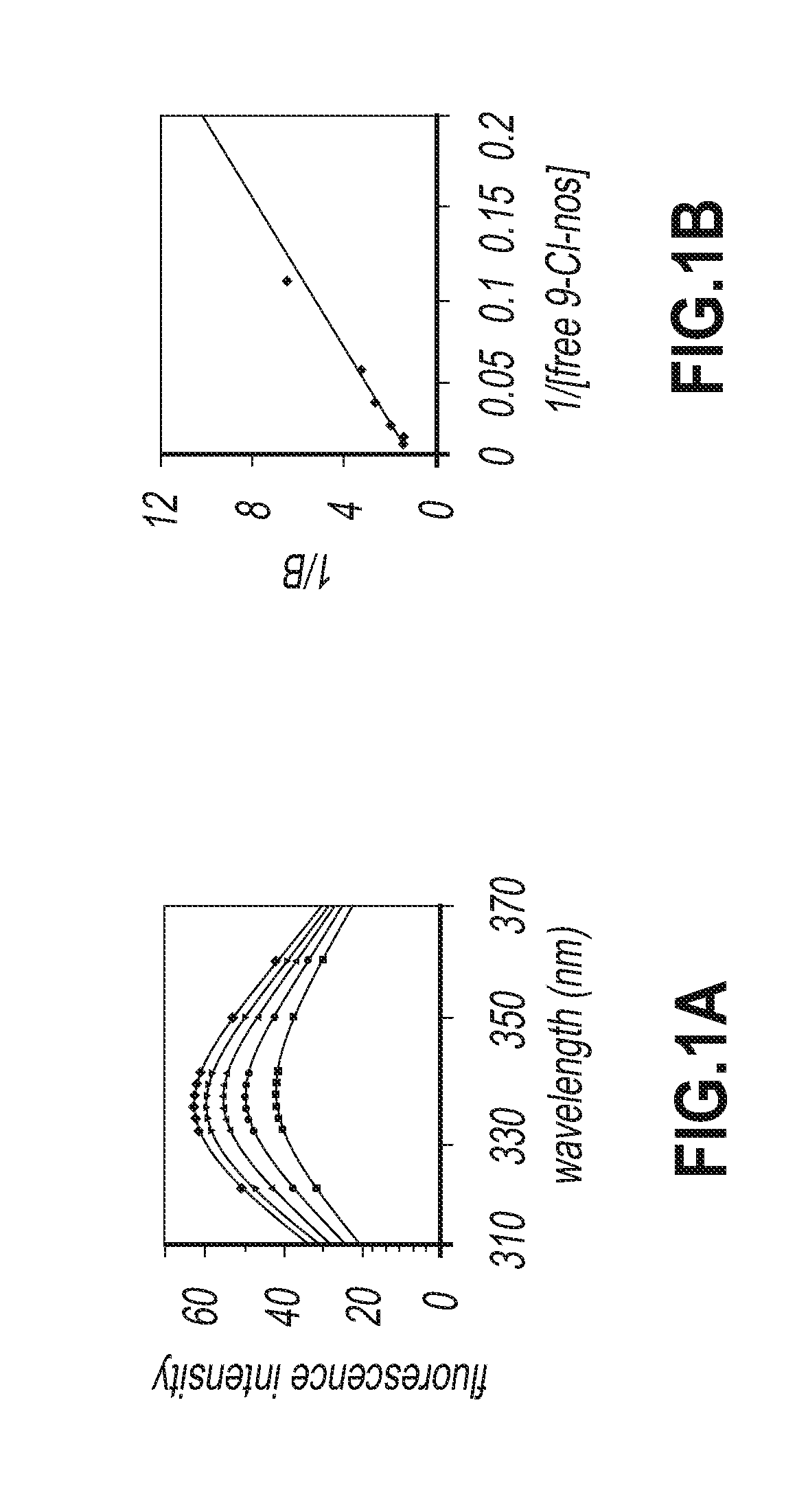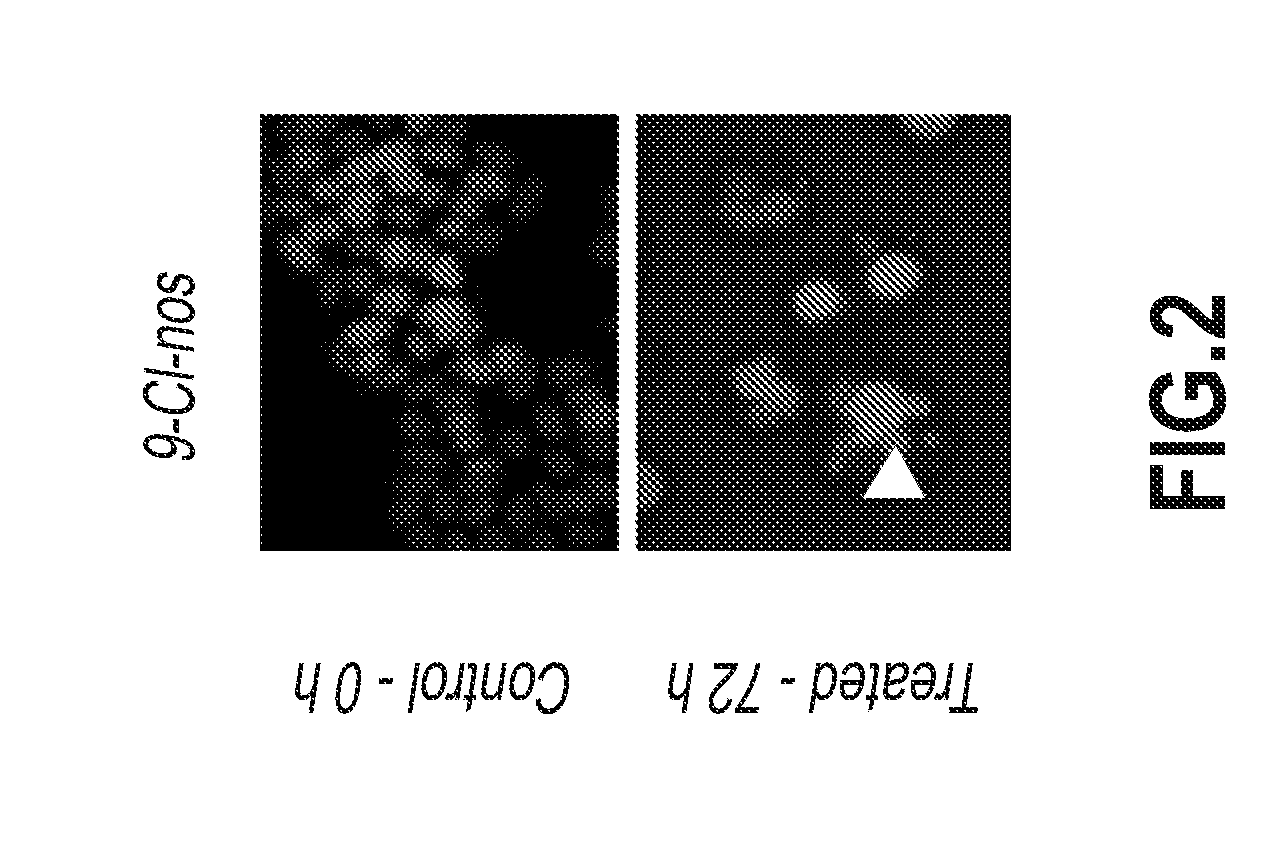9-chloro noscapine and its use in treating cancers, including drug-resistant cancers
a technology of noscapine and chloronoscapine, which is applied in the field ofnoscapine analog 9chloronoscapine, can solve the problems of hypersensitivity reactions, limited pharmacological profile of microtubule-binding agents, and current use of microtubule drugs such as vincas and taxanes, and achieve the effect of inhibiting cell proliferation
- Summary
- Abstract
- Description
- Claims
- Application Information
AI Technical Summary
Benefits of technology
Problems solved by technology
Method used
Image
Examples
example 1
Synthesis of 9-Chloro-Noscapine
(S)-3-((R)-9-chloro-4-methoxy-6-methyl-5,6,7,8-tetrahydro-[1,3]dioxolo[4,5-g]iso-quinolin-5-yl)-6,7-dimethoxyisobenzofuran-1(3H)-one
[0059]To a stirred solution of noscapine (5 g, 12.01 mmol) in chloroform (200 ml), a solution of sulfuryl chloride (4.897 g, 36.28 mmol) in 100 ml chloroform was added drop wise over a period of 1 hour at 5-10° C. The reaction mixture was allowed to attain room temperature and stiffing was continued for 10 hours. The reaction progress was monitored using thin layer chromatography (7% methanol in chloroform). The reaction mixture was poured into 300 ml of water and extracted with chloroform (2×200 ml). The organic layer was washed with brine, dried over anhydrous magnesium sulfate and the solvent evaporated in vacuo to afford the crude product. Purification of the crude product using flash chromatography (silica gel, 230-400 mesh) with 7% methanol in chloroform as an eluent afforded the desired product, (S)-3-((R)-9-chloro-...
example 4
Evaluation of Tubulin Binding Properties of Halogenated Noscapine Analogues
[0065]Cell Lines and Chemicals:
[0066]Cell culture reagents were obtained from Mediatech, Cellgro. CEM, a human lymphoblastoid line was provided by Dr. William T. Beck (Cancer Center, University of Illinois at Chicago). MCF-7 cells were maintained in Dulbecco's Modification of Eagle's Medium 1× (DMEM) with 4.5 g / L glucose and L-glutamine (Mediatech, Cellgro) supplemented with 10% fetal bovine serum (Invitrogen, Carlsbad, Calif.) and 1% penicillin / streptomycin (Mediatech, Cellgro). MDA-MB-231 and CEM cells were grown in RPMI-1640 medium supplemented with 10% fetal bovine serum, and 1% penicillin / streptomycin. Mammalian brain microtubule proteins were isolated by two cycles of polymerization and depolymerization and tubulin was separated from the microtubule binding proteins by phosphocellulose chromatography. The tubulin solution was stored at −80° C. until use.
[0067]In Vitro Cell Proliferation Assays
[0068]Sulf...
PUM
| Property | Measurement | Unit |
|---|---|---|
| dissociation constant | aaaaa | aaaaa |
| concentration | aaaaa | aaaaa |
| concentration | aaaaa | aaaaa |
Abstract
Description
Claims
Application Information
 Login to View More
Login to View More - R&D
- Intellectual Property
- Life Sciences
- Materials
- Tech Scout
- Unparalleled Data Quality
- Higher Quality Content
- 60% Fewer Hallucinations
Browse by: Latest US Patents, China's latest patents, Technical Efficacy Thesaurus, Application Domain, Technology Topic, Popular Technical Reports.
© 2025 PatSnap. All rights reserved.Legal|Privacy policy|Modern Slavery Act Transparency Statement|Sitemap|About US| Contact US: help@patsnap.com



